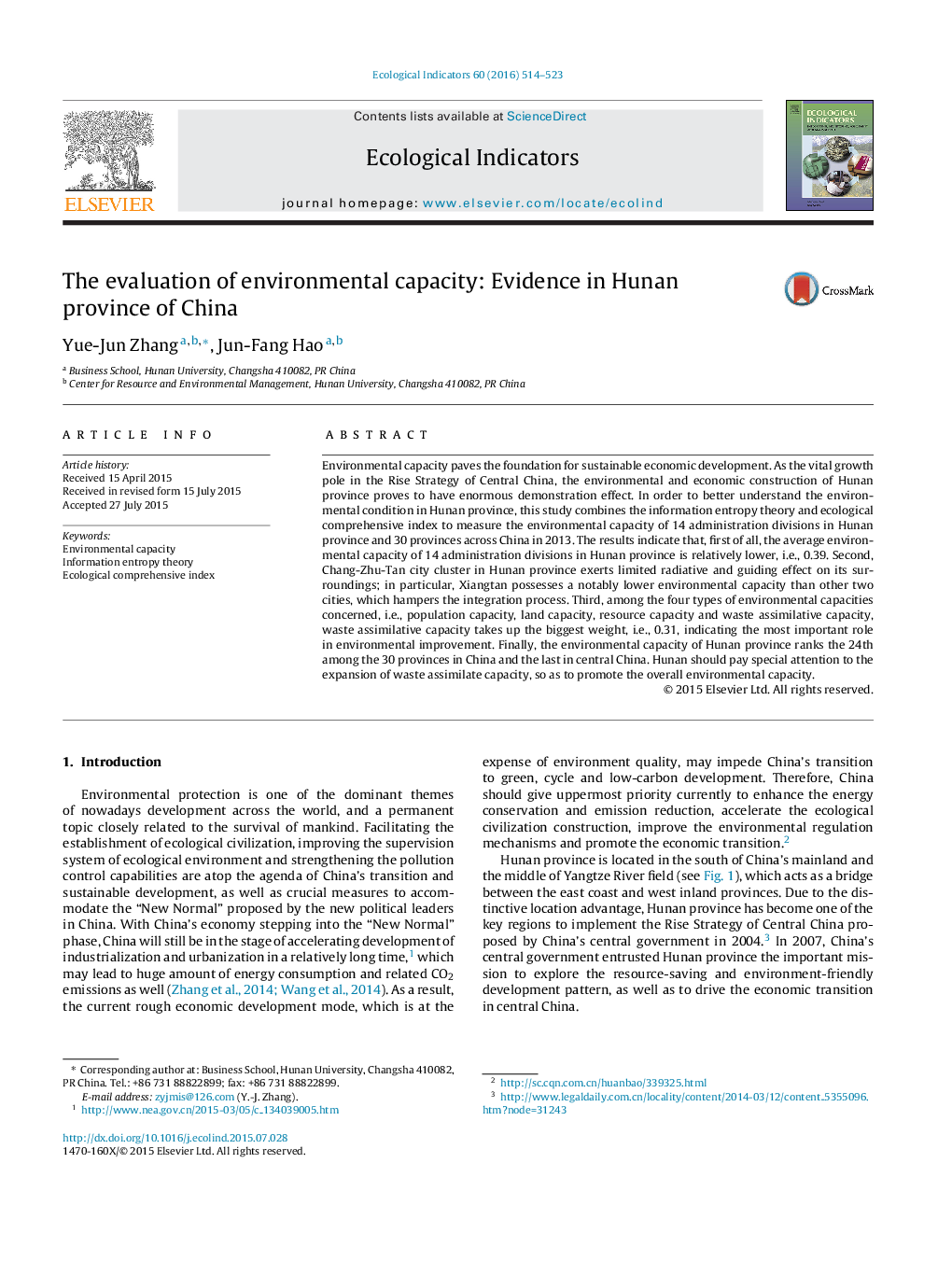| Article ID | Journal | Published Year | Pages | File Type |
|---|---|---|---|---|
| 6294095 | Ecological Indicators | 2016 | 10 Pages |
Abstract
Environmental capacity paves the foundation for sustainable economic development. As the vital growth pole in the Rise Strategy of Central China, the environmental and economic construction of Hunan province proves to have enormous demonstration effect. In order to better understand the environmental condition in Hunan province, this study combines the information entropy theory and ecological comprehensive index to measure the environmental capacity of 14 administration divisions in Hunan province and 30 provinces across China in 2013. The results indicate that, first of all, the average environmental capacity of 14 administration divisions in Hunan province is relatively lower, i.e., 0.39. Second, Chang-Zhu-Tan city cluster in Hunan province exerts limited radiative and guiding effect on its surroundings; in particular, Xiangtan possesses a notably lower environmental capacity than other two cities, which hampers the integration process. Third, among the four types of environmental capacities concerned, i.e., population capacity, land capacity, resource capacity and waste assimilative capacity, waste assimilative capacity takes up the biggest weight, i.e., 0.31, indicating the most important role in environmental improvement. Finally, the environmental capacity of Hunan province ranks the 24th among the 30 provinces in China and the last in central China. Hunan should pay special attention to the expansion of waste assimilate capacity, so as to promote the overall environmental capacity.
Keywords
Related Topics
Life Sciences
Agricultural and Biological Sciences
Ecology, Evolution, Behavior and Systematics
Authors
Yue-Jun Zhang, Jun-Fang Hao,
